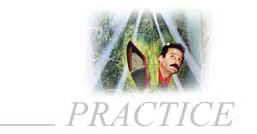| |
|
|
| |
Original RECTOVERSION®, HISTORY (continued)
From a traditional base to polysemic assembly(1978 - 1987).
|
|
| |
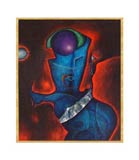
There is no question of the back here. The framed painting is
fixed on the wall in a traditional wall. This position emphasizes
the front exclusively (up to 1983).
|
|
| |
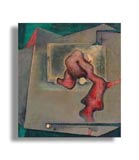
The very beginning of the back is being introduced. The base is
deliberately placed a few centimetres from the wall.
|
|
| |
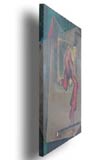
(the same painting as before but seen laterally). The frame has
disappeared and the edges of the painting are painted. The front
is thus prolonged on these edges (around 1984).
|
|
| |
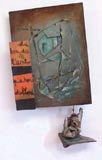
The association of three-dimensional objects makes this work into
a 'relief' painting.
|
|
| |

(the same painting as before but seen laterally). The painting
is still fixed to the wall but in a tilted position. The front has
started to rotate (around 1985).
|
|
| |
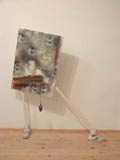
(side intended to be seen). The painting is detached from the wall
and, for the first time, is located in space(1986).
|
|
| |
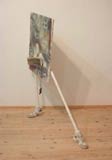
(seen from the front). More reminiscent of a painting-sculpture
than a two-dimensional painting.
|
|
| |
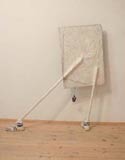
(other side). The back is painted and can be seen.
|
|
| |
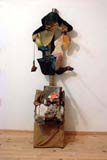
The slide towards painted sculpture is confirmed. The assembly
becomes polysemic. The two and three dimensions are combined there
(around 1987).
|
|
 |
|
|

